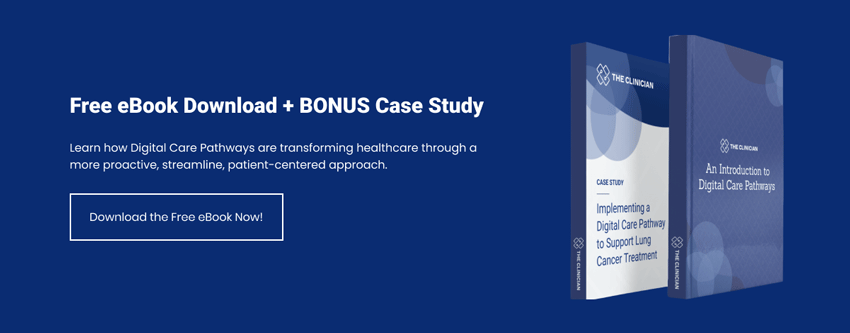How to Get Started with Digital Care Pathways at Your Institution
You’ve probably heard of “care pathways,” the step-by-step movement of patients through the healthcare system, starting with the realisation of a problem or concern and followed by the efforts to address it. The concept and the term were born in the 1980s. Today, in the 21st century, care pathways are increasingly digital care pathways, as is the case with so many other aspects of contemporary life.
“Digital Care Pathways” (DCPs) employ digital technologies to follow and support patients through their healthcare journeys. The digital aspect is a big improvement as DCPs present healthcare systems with a way to more deeply understand each patient’s health and deliver more streamlined, proactive, and patient-centric care. Data is the currency, and sharing it freely throughout a healthcare enterprise can work wonders.
Why we need digital care pathways.
The traditional care journey we’ve known since before the turn of the last century is fragmented by nature. Riddled with paper-based procedures, siloed functions, repetitive tasks, and disjointed communications, it’s a model of inefficiency and waste—wasted time, wasted money, and too often, wasted opportunities to improve health or prevent suffering. With digitisation and effective data sharing, all the processes of providing care can be connected and streamlined—and, as a result, multiple aspects of healthcare can be improved.
But how to begin to transform a fragmented healthcare organisation into one that is streamlined via digitisation? How to build digital care pathways?
Begin with a self-assessment of your current processes
The journey begins with a self-assessment of existing care pathways and the processes they involve. Consider what challenges exist at your organisation:
What care processes slow you down or frustrate your staff?
Where have patients or staff noted an inconvenience?
Where are errors and other problems most likely to occur?
Where could digitisation and the benefits of extending care to the home create value?
Consider also what goals or objectives your organisation has:
Would you like to reduce the amount of time that nurses spend filling out forms?
Are you hoping to improve the patient experience?
Do you want to provide more personalised care and monitor patients remotely?
Do you want to increase patients’ engagement with their care plans?
Do you want to drive better outcomes?
Understanding your pain points and objectives is step one.
Identify one existing process that could be digitised.
Within your goals and pain points, look for just one process that might be digitised to get you closer to solving a problem or meeting a goal. You don’t need to start with a drastic step, sweeping action, or major expenditure.
For example, instead of having patients fill out a health history form on paper when they arrive for an appointment, could you send forms out to them electronically ahead of time and have risk assessments performed automatically? Even a small step like this will improve patient satisfaction and staff efficiency. And, when people see that digitisation has yielded improvement, they will be more accepting of more digitisation.
Consider starting with a PROMs project.
Patient-reported outcome measures or PROMs are a valuable asset for healthcare providers today, giving them the information they need to measure, analyse, and improve care from the patient’s perspective. PROMs programs can also serve as a tidy, discrete means of embarking on digitisation. Monitoring patient outcomes via patients’ own devices in the comfort of their own homes and feeding that real-time information into one accessible, centralised location gives healthcare organisations the critical data they need to deliver the right care at the right time for each and every patient.
Let an expert show you what’s possible.
In our experience at The Clinician, healthcare organisations are typically surprised to learn how much of what they accept as standard operating procedure can be improved via digitisation, saving time, money, and aggravation for multiple stakeholders.
There’s no place in healthcare today for fragmentation, silos, or inefficient care processes. We all deserve better, and “better” is available.
Talk with us at The Clinician about what’s possible via streamlined, digital care pathways. We’re ready to help.



